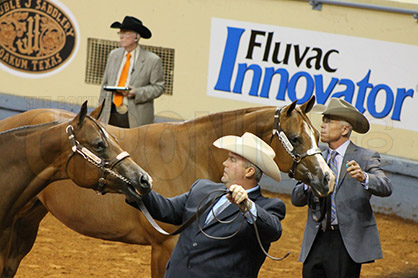We all know that it is important to build good topline, which is defined as the muscle cover over the top of the horse’s neck, back and rump, on our horses. But why is it important, and how do we accomplish this?
A good topline is an indication of excellent muscle tone and suppleness, and allows the horse to move well and be at his maximum athleticism, as well as creating a better appearance. This is accomplished through a combination of proper nutrition and exercise.
Exercise is one part of the equation. But while exercise can condition and train existing muscles, it cannot make muscle. When we are riding our horses everything we do can either promote topline, or not, depending on how it is done. If we are encouraging correct movement, we are improving the topline.
Long and low work, hills, spirals, transitions both between and within gaits, and cavaletti work, are all good exercises if done correctly. Riding a horse behind the bit, or with its head in the air is not correct. A horse forced into a frame also will not develop proper topline.
Yet correct exercise on its own can never reap the desired results. Topline, unlike what some people think, is composed of muscle, not fat. And muscle must be built. No amount of proper work will build that muscle without the right nutrition.
Muscles cannot be built without the nutritional building blocks they require of protein and amino acids in the diet. Although many of us have been taught that horses have a protein requirement, the requirement is actually for amino acids. Protein is composed of chains of amino acids which work like building blocks to build a protein molecule.
Amino acids come in two groups: non-essential and essential. Non-essential amino acids are produced by the horse. Horses cannot manufacture essential amino acids so they need to be provided in the horse’s food.
Feeding grains with high crude protein, but not good quality crude protein, will be insufficient. High quality protein provides these essential amino acids, which promote muscle tone—and a good topline. Important essential amino acids include lysine, methionine, tryptophan and threonine. Timing can be important too, as feeding these important amino acids 45 minutes after exercise seems to be most beneficial. This can bring about reduced muscle breakdown, and improve recovery.
Now that you know what to feed, where do you find it? We have a solution. Purina’s SuperSport provides high quality protein to support muscle development for a more athletic body type. This pelleted top dressing provides lysine, threonine and methionine to help support your horse’s muscular development. In addition to helping your horse achieve a muscular topline (and overall body musculature), SuperSport promotes more rapid recovery after exercise.
Train your horse properly, and feed those all-important amino acids. The combination is the key to a glorious topline.
Brought to you by Eastern Hay and Grain, www.easternhay.com, easternhay@yahoo.com, 845-855-3291.











